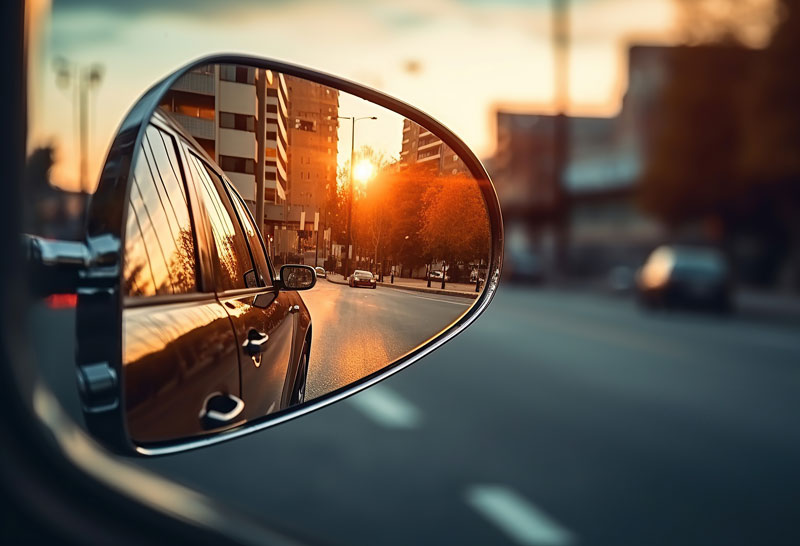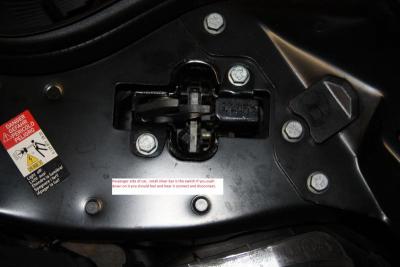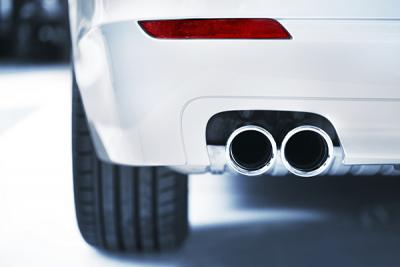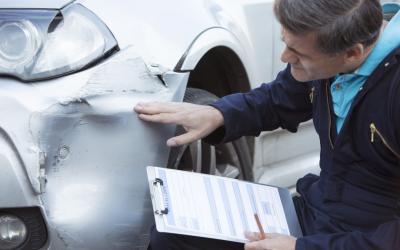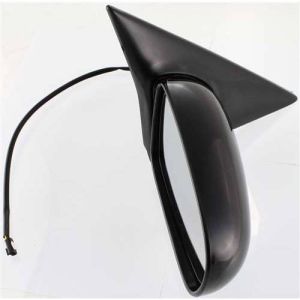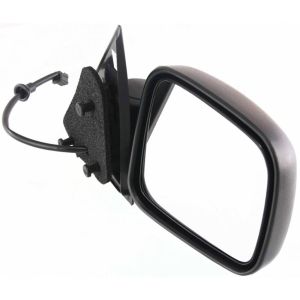Just like the legendary Argus Panoptes with his hundred eyes, you need to have a clear 360-degree view of your surroundings when you're behind the wheel.
However, if you're not adjusting your car mirrors correctly, you're likely to end up with blind spots that can make driving a risky business. You might think you've got it all covered, but are you sure you're doing it right?
In the following discussion, we're going to explore the best practices for adjusting car mirrors for maximum visibility. This might just be the key to enhancing your safety and confidence on the road, so why not stick around and find out more?
Key Takeaways
- Mirrors are crucial safety features on vehicles and proper usage is essential for visibility and reducing blind spots.
- Adjusting mirrors properly is important for optimal visibility. The rearview mirror should show the entire rear window, and side mirrors should be adjusted to show a small portion of the side of the car.
- Different scenarios require different mirror usage, such as checking rearview and side mirrors when merging, continuously scanning all mirrors during general driving, and utilizing all three mirrors when parallel parking or pulling a trailer.
- Regularly checking and cleaning mirrors, using the night setting for reduced glare during night driving, and adjusting mirror positioning for different drivers are important for effective mirror use.
Why Is It Important to Have Adjusted Mirrors?
Maximizing your visibility on the road, properly adjusted mirrors play a critical role in ensuring your safety by eliminating blind spots and helping you keep a clear view of the traffic around you.
You've probably realized that, without these mirrors, your visibility is severely hampered. That's why it's important to not only have them but also ensure they're correctly adjusted.
Properly adjusted mirrors give you maximum visibility, which is crucial when you're navigating through traffic. They help you see the vehicles behind you and those coming up on your sides, essentially acting as your eyes in the back of your head. Without them, you're practically driving blind, which isn't safe at all.
Imagine merging lanes without knowing what's in your blind spot, or reversing without seeing what's directly behind you. That's a recipe for disaster, isn't it? It's therefore not only important but essential to have well-adjusted mirrors.
They play a big part in your safety on the road. Not to mention, they also provide peace of mind knowing you have a clear view of your surroundings. So, remember to always check and adjust your mirrors for maximum visibility. It's a small step that has a big impact on your safety.
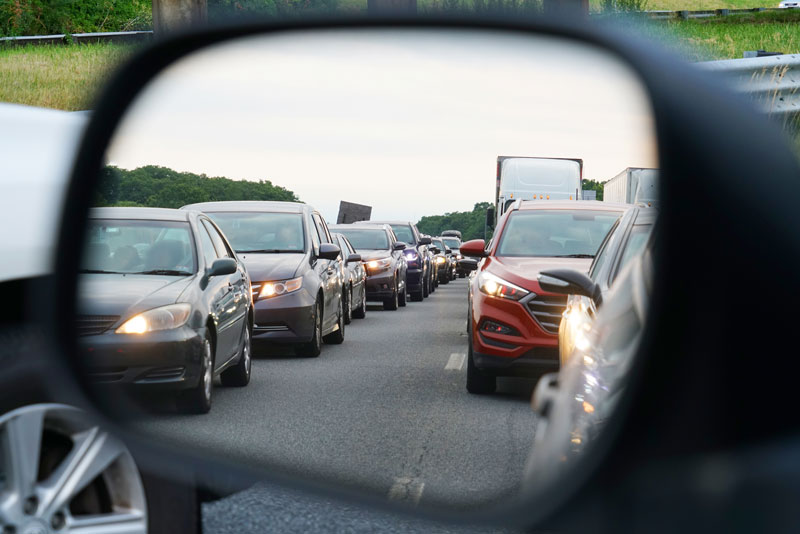
Factors That Limit Your Visibility While Driving
While properly adjusted mirrors significantly enhance your safety on the road, it's also crucial to be aware of various factors that can limit your visibility while driving. These factors can make changing lanes hazardous and increase the risk of accidents.
The following are some of the key factors that limit your visibility while driving.
Environment-related factors:
- Weather conditions: Heavy rain, fog, or snow can greatly reduce your visibility.
- Night driving: Low light conditions make it harder to see your surroundings.
- Sun glare: Direct sunlight can temporarily blind you, making it difficult to see the road or other vehicles.
Vehicle-related factors:
- Blind spots: These are areas around your vehicle that are not visible in your mirrors.
- Window obstructions: Dirty windows, stickers, or hanging air fresheners can block your view.
- Poorly adjusted mirrors: If not adjusted correctly, mirrors may not provide a complete view of the road.
Driver-related factors:
- Distractions: Texting, eating, or other activities can take your focus away from the road.
- Fatigue: Tiredness can slow your reaction time and affect your ability to focus.
- Poor eyesight: Without correct glasses or contacts, your visibility can be significantly impaired.
Understanding these factors and how to mitigate them can help you maintain maximum visibility and safety while driving.
How to Position Your Car Mirrors for Maximum Visibility?
Let's get you started on optimizing your car mirror positions for the best visibility. First, you'll need to adjust the rear view mirror, ensuring the entire rear window is visible without straining your neck.
Next, we'll tackle adjusting your side view mirrors to minimize blind spots and enhance your field of vision.

Adjust the Rear View Mirror
To enhance your road safety, start by adjusting your rearview mirror to completely capture the view through the back windshield, without having to move your head. The rear view mirror, also known as the interior mirror, is a vital tool in maintaining a clear view of vehicles behind you.
Here's how you can adjust the rear view mirror effectively:
- Begin by sitting in the driver's seat in your normal driving position.
- Adjust the mirror so you can see the entire rear window.
- Make sure you don't have to crane your neck or strain your eyes.
- At night, flip the tab at the bottom of the mirror to avoid glare.
- Regularly check the mirror while driving for maximum awareness.
With these adjustments, you'll be able to drive more safely and confidently.
Adjust Side View Mirrors
After getting your rearview mirror in the right spot, it's essential to correctly position your side view mirrors for maximum visibility and safety. Start with your driver side mirror. Lean your head until it almost touches the window, then adjust the mirror so you can just see the side of your car.
For the passenger side mirror, lean to the right towards the center of the car and adjust the mirror until the side of your car is barely visible. Properly adjusted side mirrors can greatly reduce your blind spots and enhance your safety on the road.
Remember, your side mirrors aren't just for checking if your car fits in a parking space—they're vital for safe lane changes and keeping an eye on the traffic around you.
What Are Blind Spots and Why Do They Matter?
Understanding blind spots, those areas around your vehicle that can't be directly seen while looking forward or through either the rear-view or side mirrors, is crucial for your safety on the road. These are the areas that can hide other vehicles, cyclists, or pedestrians from your sight, making them a significant safety hazard.
So why do blind spots matter? - Here's why:
- They pose a risk when changing lanes or turning
- They can hide small or distant objects
- They can lead to collisions if not checked properly
Eliminating blind spots is possible with proper mirror adjustment. Start by sitting in the driver's seat and adjusting your rearview mirror so you can see as much of your rear window as possible. Then, adjust your side mirrors.
Here's how:
- Lean to your left to adjust the driver's side mirror until you can barely see the side of your car.
- Lean to your right and adjust the passenger's side mirror in the same way.
Conclusion
So, don't underestimate the power of well-adjusted mirrors. Imagine navigating through heavy traffic in a bustling city like New York. With properly positioned mirrors, you can easily spot a reckless cyclist darting from your blind spot, potentially saving lives.
So, take a few moments to adjust your mirrors before hitting the road. It's a small step that can make a huge difference in your driving experience and safety.
FAQs (Frequently Asked Questions)
What Should I Do if My Car Mirrors Do Not Provide Sufficient Visibility Even After Adjustments?
- If your car mirrors don't offer enough visibility even after adjustments, consider installing auxiliary mirrors. They'll help reduce blind spots. If that doesn't work, consult a professional for potential mirror replacement or repositioning.
Are There Any Additional Tools or Accessories to Enhance the Visibility Provided by Car Mirrors?
- Sure, there're tools to enhance mirror visibility. Convex mirrors, for instance, can widen your field of view. Anti-glare films also help reduce reflections at night. Always ensure they're properly installed for maximum effectiveness.
What Types of Mirrors Are Best for Drivers With Vision Impairments?
- For drivers with vision impairments, auto-dimming mirrors are ideal. They reduce glare from headlights behind you, making nighttime driving easier. Heated mirrors are also beneficial as they prevent fogging, enhancing visibility in cold weather.
